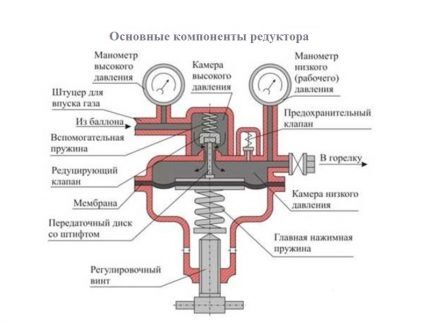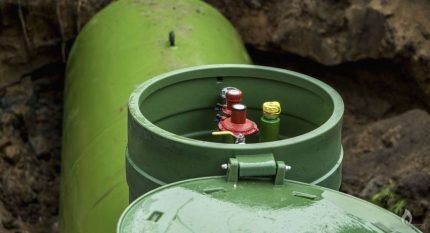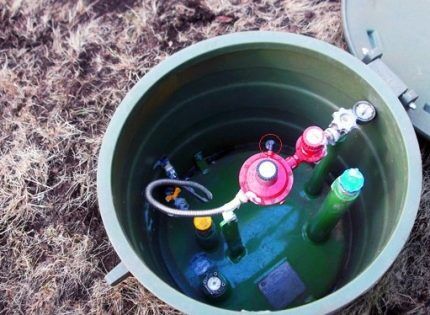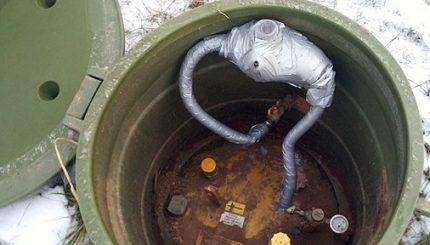Pressure reducer for gas tank: operating principle, design features and replacement instructions
Do you agree that when designing and installing gas equipment, a parameter that deserves special attention is operating pressure? Since only if the required values are observed and this characteristic is constantly adjusted, safe operation of the gas system is possible.
Stabilization and reduction of the pressure of the gas in the storage tank is ensured by a reducer for the gas holder, therefore the regulator is an integral part of the system: “gas holder - gas consuming devices”.
Independent installation or replacement of a gas reducer in an autonomous gas supply system at home requires certain skills and knowledge. You need to know what the control device consists of and how it works. Therefore, we suggest you understand the operating principle of the gearbox, the subtleties of adjustment and the nuances that arise when replacing it.
The content of the article:
Purpose and design of the gas tank reducer
They are used to supply gas to dachas, cottages and private houses. gas tanks. Despite this, a gas reducer with a pressure gauge and a safety valve is an integral element of a system designed for storing and supplying blue fuel.
The gas reducer performs a function similar to that of a stabilizer in an electrical network. It stabilizes the gas pressure coming from the tank to the equipment. In addition, its tasks include maintaining a certain pressure obtained at the outlet of the tank throughout the entire utility network.

The operation of any reducer is aimed at reducing the pressure of liquefied gas, therefore all pressure stabilizers have the same elements:
- frame;
- two gas chambers;
- inlet and outlet fittings;
- main and auxiliary springs;
- reducing and safety valves;
- membrane;
- transfer disk with pin;
- one or two pressure gauges;
- adjusting screw.
Gearboxes can differ in weight and dimensions, body shape and throughput.
Operating principle of the stabilization device
Modern pressure reducers for gas tanks operate on the reverse action principle. The gas coming from the inlet rod tends to close the pressure reducing valve.
The adjusting screw compresses the main spring and when air leaves the working chamber, the flexible membrane pushes the transfer disk with the pin up. At this moment, the pin compresses the return spring, moving the reducing valve away from the seat, and the gas enters the working chamber.

After the substance moves into the low-pressure chamber, gas exits into the system. As a result, the spring relaxes, the transfer disk and pin lift the valve, gas from the upper chamber enters the low pressure chamber, and the process repeats.
When the gas release decreases, the pressure in the chamber will increase, the spring will take the “closed” position, the valve will lower into the seat, and the gas supply to the reducer and low pressure chamber will stop.
To stabilize the gas pressure in the gas tank, two-stage reducers are used. The fuel in such regulators, before entering the outlet fitting, goes through two stages of reduction.

Two stages of the reducer provide maximum stability of the output pressure, so they are safer during operation.
In addition, two-stage devices are resistant to freezing, so they provide a continuous supply of gas in summer and winter. If the gearbox is still frozen, we recommend reading our other article, where we described in detail how to fix this problem. Read more - read Further.
How to adjust the gas reducer?
The factory settings of the gas outlet pressure in the reducers may differ from the optimal one for a given network, therefore direct adjustment of the operating pressure in the gas tank reducer occurs during its installation. The physical value depends on the tension of the main pressure spring, which changes when the position of the adjusting screw changes.
In two-stage stabilizers, the adjusting screw can only be located on the first stage of the gearbox. Such devices include models: Cavagna Group type 524, GOK PS 16 bar POL x IG G1/2 PSK CIS, SRG 7.5 kg/h.
In some more expensive models from the Italian company Cavagna Group, the German GOK, and the American Fisher, the second stage of the regulator is also equipped with an adjusting screw.

Both stages of the high pressure regulator can be selected separately, then the user can choose the set of stages independently. In this case, gas reduction devices connected to the complex valve always have a pressure adjustment screw, and the second stage can be either with or without a screw.
Popular second-stage adjustable gearboxes are devices from the Cavagna Group, type 992, 998, 998-4.
The first stage of pressure regulation occurs at the gas vapor extraction valve using a built-in pressure gauge. Then the gas enters the reducer chambers. If they are not supplied with control devices, pressure gauge installed directly on the outlet pipe.
On almost all gas tank reducers, the outlet pressure is adjusted using a screw. The adjusting screw is turned with a wrench through the hole located under the removable gearbox cover.
Turning clockwise increases the output pressure, turning it counterclockwise decreases it.

At the outlet of the tank, after the gas vapor phase selection valve, the substance enters the first stage of the reducer; the stabilizer converts high pressure in the range from 0.2 to 4 bar, depending on the device model.
The second stage reduces the stable pressure required for the operation of the connected equipment, equal to 10-200 mbar.
Instructions for replacing the regulator
Two-stage gearboxes are connected to the vapor extraction valve using a threaded fitting and a union nut. The type of thread at the reducer inlet depends on the type of thread at the valve outlet.
If the nature of the connection was not taken into account at the time of purchase, an appropriate adapter will be required. Connecting a device with gas hose, is performed through a threaded outlet on the gearbox, using an adapter or union nut.
To replace the stabilization device, you will need a gas wrench. If the connection is rusty, then to remove the gearbox you will need two adjustable gas wrenches.

To replace the gas reducer, you must perform the following sequence of work:
- Shut off the gas supply using the valve located on the gas vapor extraction valve.
- Unscrew the metal hose.
- Unscrew the union nut connecting the valve and stabilizer.
- Remove the gearbox with connecting hose.
- If the stabilizer cannot be repaired, then it is necessary to twist the bellows hose.
- After ice cleaning, repair or replacement, the regulator should be screwed to the complex valve using a nut.
- If the device was disconnected from the supply line, it is necessary to connect the gas hose step by step, first to the reducer, then to the main line.
- After fixing the connections, you can turn on the gas supply.
When starting fuel into the system, after replacing the fittings, it is necessary to check the outlet pressure; it must be within acceptable limits and be suitable for operation of the heater, stove or boiler.
With correct installation and normal operating conditions, the regulator, as a rule, lasts at least 10 years.

You can diagnose problems with the stabilizer using a level gauge and pressure gauge on the tank. If the devices show that there is enough gas, but there are interruptions in the network, then one of the problems with the gearbox is to blame.
In this case, the device can be disassembled and dried. This will help solve the problem, but temporarily. If you install a new gearbox and ensure the device is protected from moisture, you can forget about interruptions in the system.
In order to avoid possible problems with the gearbox in the future, it is also important to take care of the correct installation of the gas tank on the site. You can read about how to do this correctly Here.
Conclusions and useful video on the topic
This is how the gearbox is adjusted using a differential pressure gauge:
This video shows how to eliminate minimal condensate freezing in the regulator:
How to remove, disassemble and clean the gearbox, as well as prevent it from flooding/freezing, will be discussed in the following video:
A pressure reducer for a gas tank reduces the vapor pressure of blue fuel and maintains its stable value in the utility network. Each regulator is equipped with a safety relief valve, which removes excess gas volume when the pressure at the fuel outlet becomes dangerously high from the safety circuit.
Therefore, the gearbox is the main mechanism for preventing emergency situations in an autonomous gas supply system.
If it malfunctions, you need to know how the device works and how to replace an unusable device. Therefore, the rules for replacing the gearbox will definitely be useful to owners of private houses whose houses have been gasified from a gas tank.
If you have had to install, change a gas reducer or regulate gas pressure in an autonomous system. If you know any subtleties and nuances that arise when replacing a stabilizer, be sure to share your experience and current photos with readers in the block below.



